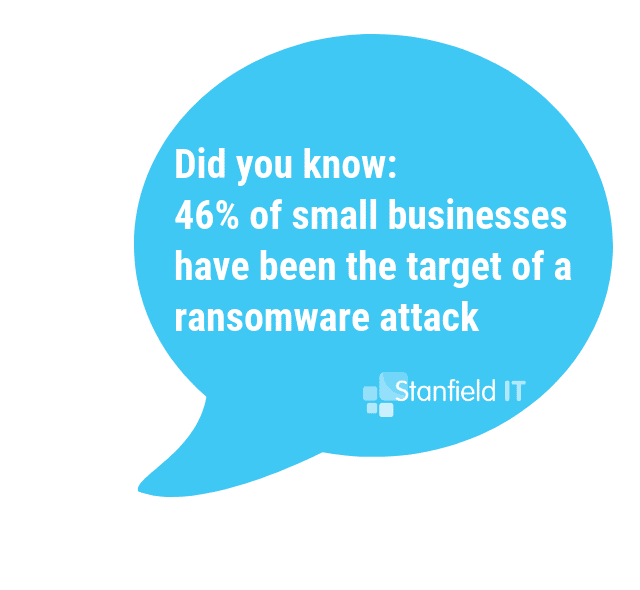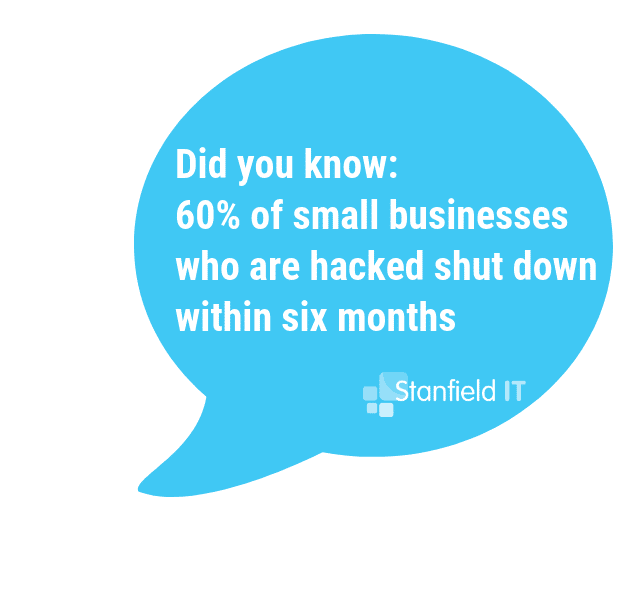What does cyber resilience mean?
With cyber threats morphing and evolving daily, just having the latest updates and security patches isn’t enough. There are hackers constantly working to infiltrate the latest safeguards, which can wreak havoc for a complacent small-to-medium business―these are the businesses that can lose the most if they’re the victim of a successful cyber attack. Being cyber resilient means not merely updating your defences and forgetting about potential threats. Instead, it entails actively assuming your business will be victim to an attack despite these measures. Including cyber resilience in your business’s cyber security strategy ensures that you’re not just focussing on the point of entry that cyber criminals could use, but how to achieve business continuity during and after an event. You should focus on when your business will be under attack, as opposed to if.
Being a cyber resilient business
Being a cyber resilient business isn’t just about preventing cyber attacks. If that were the case, then no business would be cyber resilient. Every business is at risk of a cyber attack, regardless of the security measures you may have in place. A cyber resilient business is one that can successfully and effectively bounce back from a cyber attack. Recognition for cyber resilient businesses is steadily increasing, with cyber resilience being an evolving perspective. This means that it’s all the more vital to be recognised for your cyber resilience in order to attack new clients and make sure current clients trust in your cyber security services.
To be a cyber-resilient business you need to address multiple capabilities within your business:
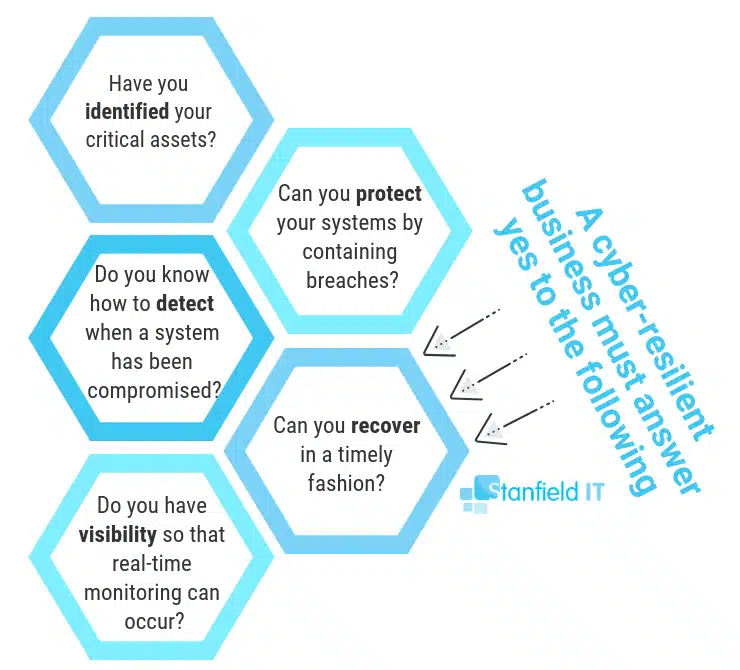
Cyber resilience is the ability to prepare for, respond to and recover from a cyber attack. Resilience is more than just preventing or responding to an attack—it also takes into account the ability to operate during, and to adapt and recover, from such an event.”
– Australia Securities & Investments Commission
Cyber resilience requires several ongoing strategies to ensure that you’re not out for the count after an attack. It can be tempting to focus solely on preventing attacks, instead of also how to respond and recover from them. But then you’ll find yourself floundering in the event of a targeted cyber attack or data breach on your business. Bear in mind, these attacks are often inevitable despite your best preventative intentions. Above all, cyber security is not just the prevention of cyber crime. It’s a comprehensive preparedness to reduce the risk of attack and respond accordingly in the event of one.
Risk Assessment
Never assume you’re completely safe from a cyber attack, or even an accidental data breach. 46% of cyber attacks are targeted at small and medium businesses, which likely applies to you.
As a small business, you probably rely on continuous business day-to-day, right? So, you may suffer catastrophic consequences if a cyber attack puts you out of commission even for one day. Hence the critical importance of being cyber resilient. Being able to immediately bounce into action in order to respond and recover from an incident is an invaluable trait that may ultimately save your business from destruction.
To be a cyber resilient business, you need to implement cyber resilience from the ground up. This creates the all-important culture surrounding cyber resilience in your business. This is important dude to the huge rate of human error in data breaches and also for having a unified front when it comes to your business’s cyber resilience.
The 6 Elements of Being Cyber Resilient
We believe that for a business to be truly cyber resilient requires the intersection of six elements of cyber security. With these six elements, your business has the best possible chance of bouncing back with success after an attack. The true test of cyber resilience. These six elements are:
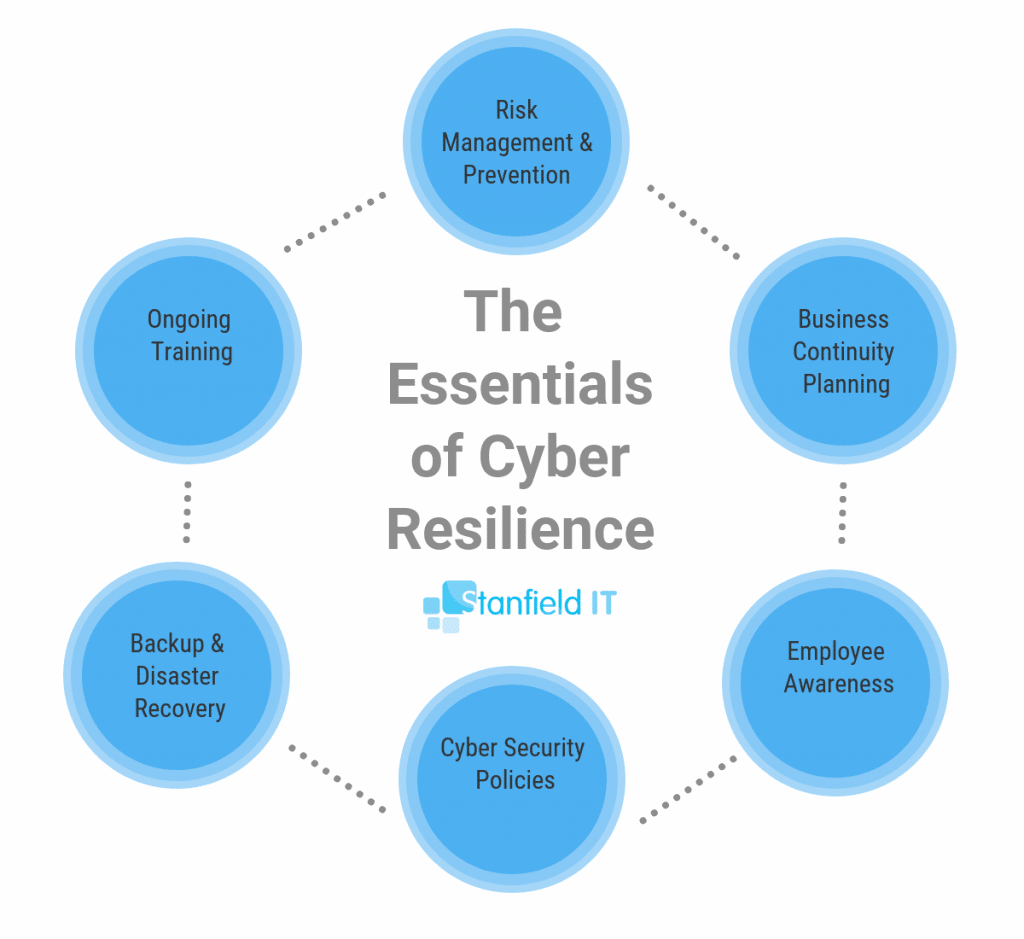
Let’s look at these elements in more detail. We’ll cover how they’ll ultimately elevate your business to become cyber resilient. And also provide a secure buffer for the well-being of your business.
1. Risk Management & Prevention
As we mentioned before, a lot of cyber security comes down to minimising your cyber risk. Cyber security strategies and guidelines are, for the most part, about risk assessment and management. If you are able to understand your cyber environment, and assess vulnerabilities; then you understand where to apply security control and overall, minimise your risk of an incident.
Your cyber resilience is built from the knowledge and understanding of cyber vulnerabilities and where risks come from. This position means that after a cyber incident, you’ve already got one foot forward. You’re not scrambling to figure out what’s going on. You can immediately move to respond and contain the potential data breach.
2. Business Continuity Planning
Your organisation should have a business continuity plan in place from the start. This is a vital component of being cyber resilient. Every business should (and likely does) have a business continuity plan. But they may not necessarily have thought to include a plan of action regarding cyber incidents.
Knowing what to do with your network, if you need to remove user access, or who you need to notify. When these steps are all laid out in a relevant business continuity plan, you don’t freeze in the moment when it matters. With many cyber incidents, prompt action can be the difference between recovery and disaster. Your business continuity planning is another key to being cyber resilient so you can get your business back on track without any drawn-out delays and interruptions to daily work.
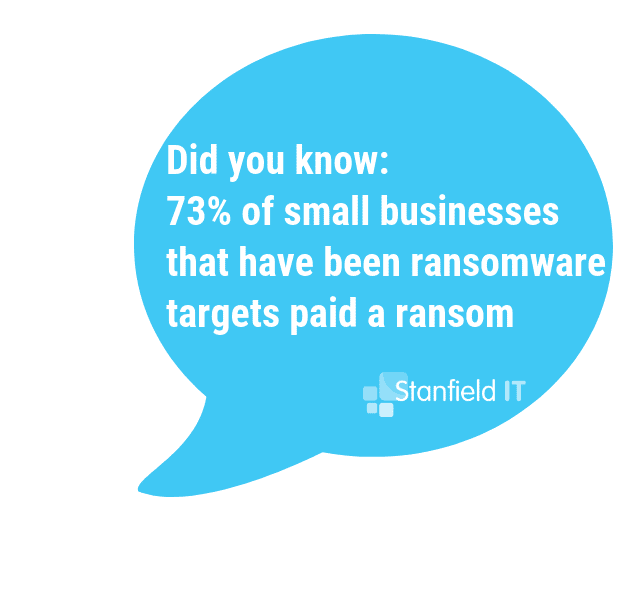
3. Backup & Disaster Recovery
Speaking of recovery and disaster, frequent backups are going to be your lifesaver one day. Even if you don’t account for a cyber attack, or data breach (malicious or not); there is always the risk of technological failure. Disk or system failure, failed applications, sudden power loss or power surge, and physical damage are all very real and very sudden possibilities that can strike at any time; with no-one to blame, and no way to prevent.
It can be tempting to put backups on the backburner, but when one of the above incidents (yes when, not if) strikes your business, don’t be left in the lurch. A cyber resilient business will not be left in the lurch, with a huge gaping hole where their data used to be. You’ll recover your regularly-tested backup, restore your data, and move on.
4. Cyber Security Policies
Cyber security frameworks, guidelines, anti-malware, sensitive data management, user management and more. These all comprise your overall resilience, in terms of having tools in place to assist you with preventing and resolving cyber incidents.
With official policies and procedures in place to manage things like user access and privileges, you begin to create a workplace culture in which cyber security is taken seriously. When cyber security is taken seriously, you’re significantly more likely to be cyber resilient, and bounce back. Here are some recommended ways to start increasing your cyber security in the workplace and reducing your risk.
5. Employee Awareness
The most cyber resilient businesses will have this in common. They have a workplace culture of cyber awareness and accountability. It doesn’t even require any outlay costs or big spending. If you ensure that your team understands the risks and gravity of cyber security, they will ultimately be your first defenders and your first responders.
There are several ways to incorporate a serious understanding of cyber security within the workplace, and doing so will create a culture where cyber security awareness becomes second nature to your team. Some suggestions:
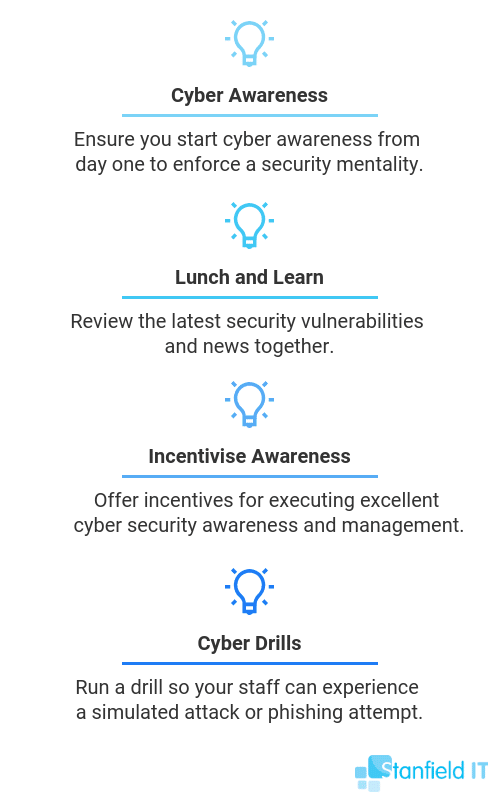
6. Ongoing Training and Updates
Certainly not the least important item on this list, it needs to be said that it’s not enough to have a one-off session on data management or making sure that Bill always logs out of the system correctly. And furthermore, no cyber security tools or strategies should be considered as ‘set and forget’. Cyber security is a constantly evolving creature, with attacks and malware often leading the way (sadly).
Use an IT partner to assist you with periodic training on cyber security awareness, providing up-to-date information and news on cyber attacks, consistently updating and patching your software and operating systems, and overall ensuring that your business doesn’t fall behind. All of the above will be for naught if your business is targeted by a completely new and malicious attack.
What Else?
Surely that’s not all you need to do in order to be cyber resilient? Of course, there’s almost always more that you can do. We recommend these strategies as the essentials of being cyber resilient; but you can always build upon it. You can also look to subscribing to cyber insurance, which ultimately takes away some financial pressure, so you’re not reeling from the cost of the breach. We also recommend cyber security auditing, physical security and the ACSC’s Essential Eight strategy.
Sadly, at this time in our flourishing technological age, we must assume that an attack will eventually come. You are at the greatest risk possible when you think about cyber attacks in terms of if not when. Ensuring that your business is cyber resilient is crucial to keeping your business in the best possible shape to respond to and recover from a cyber incident.
If the policies, framework and cyber security protocols are your metaphorical moat and fortress, then being cyber resilient means that in the unlikely event that your walls are breached, your team is ready-at-arms to contain, eliminate and get back to business.
We have an in-depth guide to cyber security here, and of course we invite any business to contact us about how to implement these steps, or inquire about other ways your business can benefit from an IT partner.

